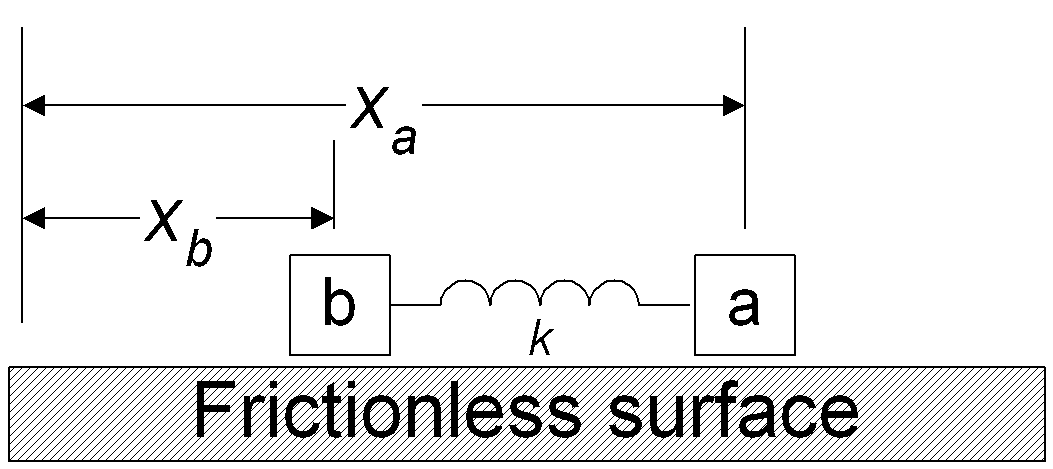Fowles and Cassidy 7.1 - 7.3 and 7.5 - 7.7 for next week.
Up to now we've applied Newton's laws to "point-like" particles only. Even when speaking of objects that are clearly not point-like, such as blocks, cars, trucks, and pendulum bobs, we've somehow managed to ignore the physical extent of the object. Although not yet shown, this treatment is justified to the extent that the body is rigid and not rotating (spinning or twisting). Now we will begin to investigate the case of "rigid" bodies, objects with a fixed, rigid, physical size. To understand how Newton's laws apply in this case, we start with a system of point-like particles, each particle obeying Newton's laws in the ways we have already studied. By summing the effects of all the particles, we will obtain results we will then apply to rigid bodies
The result for a system of particles is that the motion can be decomposed into three parts:
For a system of n particles, we define the center of mass (CM) of the system as
rCM = (m1r1 + m2r2 + … + mnrn) / (m1 + m2 +…+ mn) = (1/M) å i miri
where mi and ri are the mass and position vector of the ith particle, and M = å i mi is the total mass of the system. The velocity of the center of mass is found by differentiating with respect to time:
vCM = drCM/dt = (1/M) å i mi dri/dt = (1/M) å i mi vi
Logically we define the center of mass momentum as the total mass times of the system times the center of mass velocity. The result is:
pCM = MvCM = å i mi vi = å i pi
To summarize, the momentum of the center of mass of a system of particles is equal to the vector sum of the momenta of the particles.
Suppose each particle is acted on by an external force Fi, and particle j exerts a force Fji on particle i. By Newton's third law, particle i exerts a force on particle j that is equal in magnitude and opposite in direction, Fij = -Fji. The total force acting on particle i is
Ftot i = Fi + å j Fji
where we include a term Fii in the sum for convenience, but we force this term to be zero. The total force acting on the system is the sum of the forces acting on each part of the system.
Ftot = å i Ftot i = å i Fi + å iå j Fji = å i Fi = å i dpi/dt = dpCM/dt
This statement says that we can treat the overall motion of a system of particles as if we had a single particle of mass M located at the center of mass of the system, and subject to the total external force on the system. This is an enormous simplification! No matter how the system of particles is arranged, or how complex is their internal interactions, we can treat the entire system as a single particle located at the center of mass of the system for the purposes of understanding the overall motion -- that is, the motion of the center of mass.

Two identical blocks, a and b, slide on a frictionless track. They have mass m and are attached by a massless spring of length l and spring constant k. Initially they are at rest. At t=0 block a is hit sharply giving it an instantaneous velocity v0 away from b. Determine the motion of the blocks for all later times.
Let's begin by finding the motion of the center of mass. Calling the positions of a and b, xa and xb , the location of the center of mass is given by
xCM = (maxa + mbxb)/(ma + mb) = (xa + xb)/2
The position of the center of mass is halfway between the two masses, right where one would guess it should be.
![]()
Ó
17 February, 1999 R. Harr